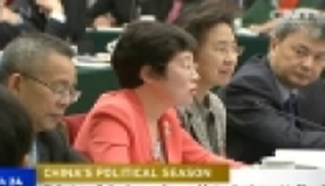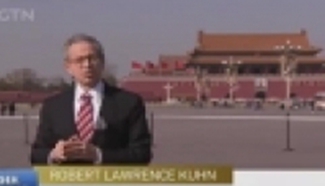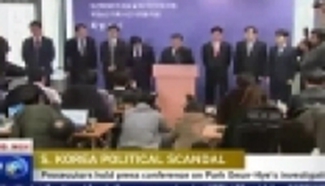BEIJING, March 6 (Xinhua) -- While China's policymakers have reined in their growth expectations for this year, a glass-maker in the southwest of the country is running its assembly lines at maximum speed.
With technicians and machines operating at full capacity, there are no signs of any economic slowdown in workshops of Zisun Technology.
The Chongqing manufacturer has even started to worry that it may not be able to meet demand as orders keep flying in. In contrast with Zisun, many other Chinese glass companies can barely keep their heads above water in an industry long beset by overcapacity.
Ruan Wei, deputy general manager of Zisun, believes the secret lies in applying technology to a sophisticated market demand. For example, Zisun products include a glass microfiber filter that can block 99.99 percent of particulate matter with a diameter greater than 0.3 micron.
"Our technology can match or surpass anything the world's leading companies offer. We already control the lion's share of the domestic market and we just cannot keep pace with orders," said Ruan.
Zisun is the epitome of the innovation-driven growth companies, which carry much of China's hopes for propping up a decelerating economy.
On Sunday China set its 2017 GDP growth target at "around 6.5 percent," the lowest in a quarter of a century, at the annual parliamentary session, not much lower than last year's range of 6.5 percent to 7 percent.
Economists said the move indicates more energy will be channelled into reform -- good news for companies like Zisun -- instead of chasing earth-shattering GDP figures.
"Given external uncertainties, the new target is pragmatic and in line with current conditions and leaves room for reform," said Chi Fulin, director of the China Institute for Reform and Development.
Supply-side structural reform was highlighted in the government work report, with plans to cut steel and coal capacity, digest unsold homes, bring down corporate leverage, relieve business burdens and fix weak economic links.
Efforts will cover on a variety of areas, including cutting red tape, tax reductions and relaxed control of market access.
Policymakers have demonstrated the tolerance to the economic slowdown, Robin Xing, chief China economist with Morgan Stanley, said. "A lower target will help wean the country off reliance on investment-drive growth, curb capital flows to old industrial sectors and eliminate outdated capacity."
China's growth model during the past decade has resulted in serious overcapacity and accumulating financial risks.
Fully aware of the side effects, the central bank shifted to a prudent and neutral monetary policy a few months ago, pledging to curb excessive credit expansion. The government expects M2 to grow by around 12 percent in 2017, down from the 13-percent goal set for last year.
China achieved progress in its structural transformation during the past year, Xing said citing more contribution by consumption and the service sector to economic growth.
As the revival of traditional industries is incomplete, growth companies in emerging sectors like Zisun are expected to play an important part in holding the economy steady this year and beyond.
"China should accelerate fostering of new economic engines to offset the failing old economy," said Zhang Liqun, a researcher with the Development Research Center under the State Council.
Analysts believe a lower target does not mean the economy will dawdle.
"We predict growth momentum will remain strong," said Liu Liu with China International Capital Corp., a Beijing-based investment bank, which raised its China 2017 GDP growth forecast to 6.8 percent.












